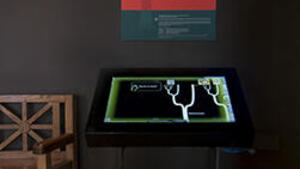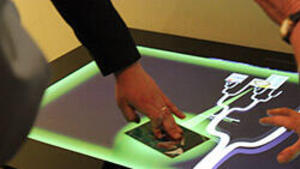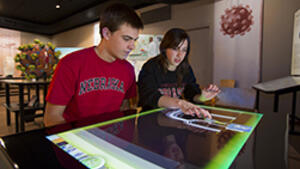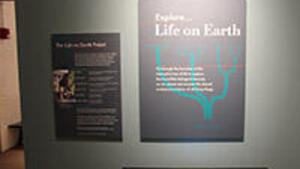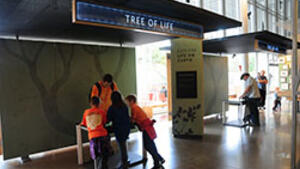Citation:
Krystal Villanosa, Florian Block, Michael Horn, and Chia Shen. 1/1/2014. “Build-a-Tree: Parent-child gaming to learn about evolution in museum settings.” Games, Learning, and Society (GLS'14).

Abstract:
Build-a-Tree is a puzzle game designed to facilitate learning about evolution in museums. BAT asks players to construct phylogenetic trees (known as cladograms) using tokens depicting species and traits. Cladograms are a fundamental representation used by scientists to communicate hypotheses about common ancestry and shared trait inheritance. BAT challenges players with seven increasingly difficult levels. To win BAT, players build on what they learn in early levels to complete more complex trees. Visitors play BAT on a multi-touch display with visual tokens that can be independently and simultaneously manipulated. Players arrange tokens to build trees that accurately depict relationships of plants and animals. BAT is the result of an iterative design process in which numerous prototypes were developed and tested over three years. We have begun testing BAT at a natural history museum with parents and children to better understand how gaming might influence interpretation of museum objects.See also: BAT 2014



